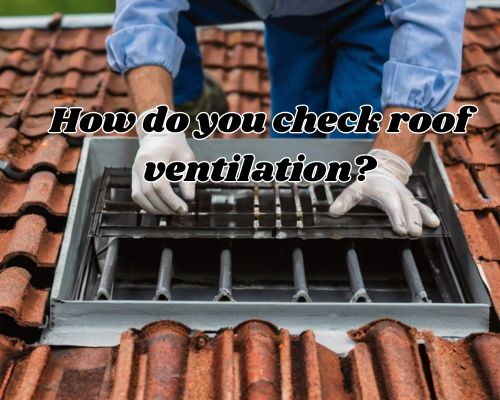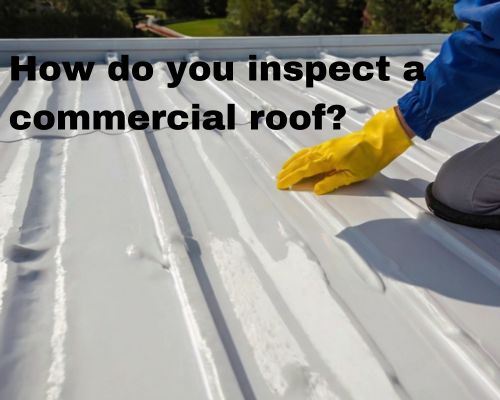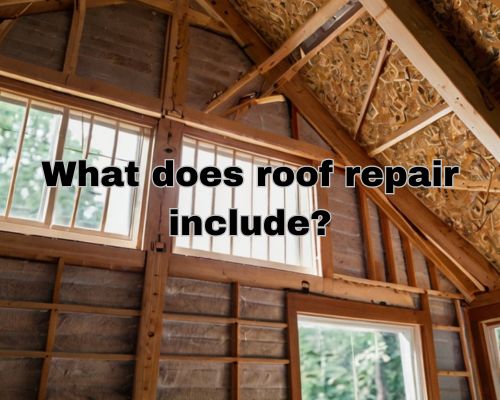How Do You Check Roof Ventilation? A Comprehensive Guide for New Jersey Homeowners

How Do You Check Roof Ventilation? A Comprehensive Guide for New Jersey Homeowners
Proper roof ventilation is crucial for maintaining the health of your home. It not only extends the life of your roof but also improves energy efficiency and prevents issues like mold growth. If you live in New Jersey, with its mix of hot summers and cold winters, ensuring proper roof ventilation is even more essential. Here’s a step-by-step guide on how to check your roof ventilation effectively.

Why Roof Ventilation Matters
CJ Commercial Roofing NJ highlights that roof ventilation helps regulate temperature and moisture levels in your attic. During the summer, it prevents heat buildup, which can damage shingles and increase cooling costs. In the winter, it reduces moisture, preventing ice dams and mold formation. For New Jersey homeowners, the state’s seasonal extremes make proper ventilation a top priority.
Signs of Poor Roof Ventilation
Before diving into how to check your roof ventilation, look out for these common signs of poor ventilation:
- Increased Energy Bills: Poor ventilation forces your HVAC system to work harder, increasing energy costs.
- Condensation in the Attic: Excess moisture often manifests as condensation on wood surfaces or insulation.
- Hot or Cold Spots: Uneven temperatures inside your home can signal ventilation issues.
- Roof Damage: Curling shingles, mold, or mildew growth are often linked to poor airflow.
If you’re experiencing any of these problems, it’s time to assess your roof’s ventilation system.
Step-by-Step Guide to Checking Roof Ventilation
- Inspect the Attic Begin your inspection in the attic. Look for signs of moisture, such as wet insulation, rusted nails, or a musty smell. Inadequate airflow often causes these issues.
- Count Your Vents A well-ventilated roof typically includes intake vents (like soffit vents) and exhaust vents (such as ridge vents or gable vents). According to the National Roofing Contractors Association, the general rule of thumb is one square foot of ventilation for every 300 square feet of attic space. Ensure your roof meets this guideline.
- Test Airflow On a windy day, place a sheet of tissue near your attic vents. If the tissue moves, the airflow is functional. If it remains stationary, your ventilation may be blocked or insufficient.
- Check Vent Placement Vent placement is critical for optimal airflow. Intake vents should be located along the roof’s lower edges (e.g., soffit vents), while exhaust vents should be near the peak (e.g., ridge vents). Misplaced vents can disrupt airflow, leading to poor ventilation.
- Look for Blockages Debris, bird nests, or insulation can block vents. Ensure that soffit vents are clear and not obstructed by insulation. Regular maintenance is key to preventing blockages.
- Assess Insulation While insulation and ventilation serve different purposes, they must work together. Over-insulating can block airflow, while too little insulation can lead to energy inefficiency. Check for gaps or compressed insulation that may need attention.
Importance of Professional Roof Inspections in New Jersey
While DIY inspections are useful, professional roofers like in CJ Commercial Roofing NJ have the expertise to identify issues you might miss. For homeowners in New Jersey, working with a local roofing company ensures they’re familiar with the area’s specific weather patterns and building codes. A professional inspection includes:
- Thermal imaging to detect hidden moisture issues.
- Checking for compliance with New Jersey’s building codes.
- Ensuring proper vent installation and airflow efficiency.
Enhancing Roof Ventilation: Tips for New Jersey Homes
If your inspection reveals inadequate ventilation, consider the following solutions:
- Install Additional Vents: Adding ridge, soffit, or gable vents can improve airflow.
- Upgrade to Solar-Powered Vents: These energy-efficient vents are ideal for sunny areas in New Jersey.
- Replace Aging Components: Old or damaged vents should be replaced promptly.
- Hire a Local Expert: Work with a reputable New Jersey roofing contractor to address complex issues.
Local Considerations for New Jersey Homeowners
New Jersey’s diverse climate requires homeowners to pay special attention to roof ventilation. From humid summers along the Jersey Shore to snowy winters in northern regions, your ventilation system must accommodate varying weather conditions. Ensure your roofing materials and vent types are suitable for New Jersey’s environment.
For example:
- Shoreline Homes: Homes near the coast should use corrosion-resistant vents to withstand salt air.
- Northern New Jersey Homes: In colder regions, focus on preventing ice dams with adequate ventilation and insulation.
Conclusion
Proper roof ventilation is essential for maintaining a comfortable, energy-efficient, and durable home. By following this guide, New Jersey homeowners can ensure their roofs are well-ventilated and prepared for the state’s unique weather challenges. If you’re unsure about your roof’s ventilation, consult a local expert for a professional evaluation. A small investment in ventilation now can save you significant repair costs in the future.







